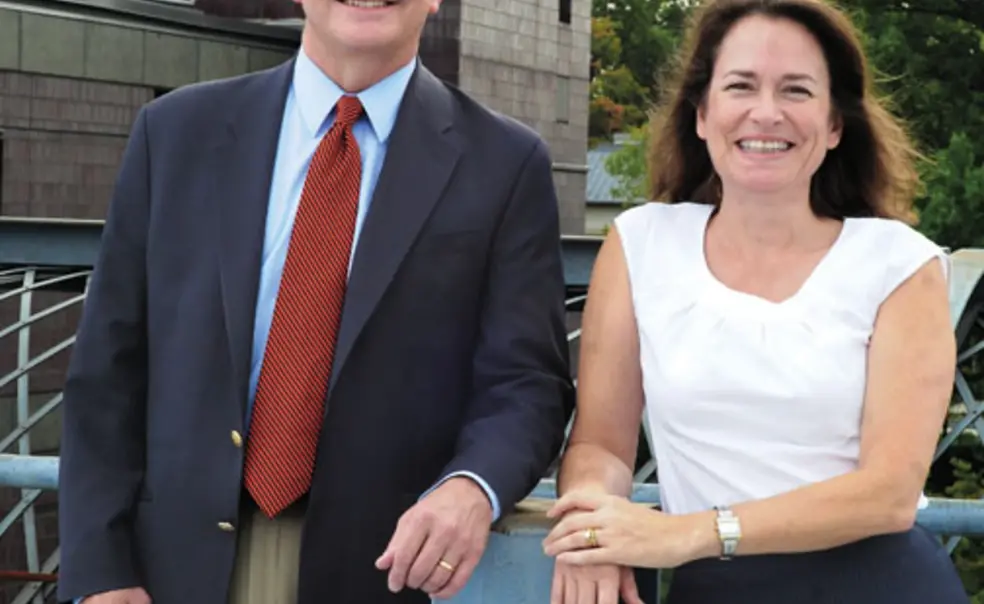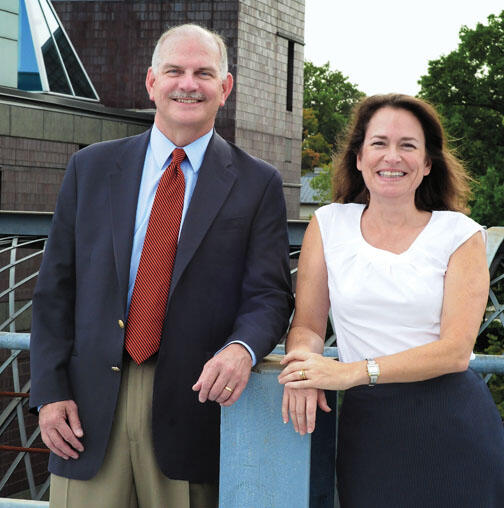Surge in enrollment sets engineering-school records
At the engineering school, the numbers are up: The biggest freshman class ever. A boom in course enrollment. A jump in sponsored research funding. More classroom and research space.
“It’s been a really good period,” said H. Vincent Poor *77 of his first five years as dean of the School of Engineering and Applied Science. “We’ve grown in many ways.”
That growth has been driven by the school’s focus on four key areas, Poor said: energy and the environment, health, security, and educating leaders for a technological society. “We’re making learning about technology attractive to students who live in a technical world,” he said.
Of the University’s $1.75 billion Aspire fundraising campaign, which has entered its final year, $325 million is earmarked for engineering and a sustainable society. Poor said he is confident that the goal will be met, with $299.3 million raised by Oct. 5.
Those funds already have had an impact, Poor said, pointing to the construction of Sherrerd Hall (2008), the current renovation of Hoyt Lab to house bioengineering research, and a permanent source of funding for the Keller Center for Innovation in Engineering Education, whose mission is to train leaders who understand the global forces that shape and are shaped by technology.
Courses at the Keller Center are open to all students, and the center has been a hub for subjects like entrepreneurship, ethics, and scientific writing that extend beyond individual departments, Poor said. “It not only helps engineers understand the societal context of their work, but it helps non-engineers appreciate how technology can affect their lives and careers,” he said.
Poor said that new certificate programs in sustainable energy and in information technology and society have been popular with non-engineering students.
Enrollment figures reflect the success of the school’s focus. This year’s freshman class has 331 engineers, 24 percent more than the previous record set two years ago, and includes a record 125 women. The total number of engineers this fall is 1,034, the first time the school has counted more than 1,000 B.S.E. students. Enrollment in engineering courses last year was up 41 percent from 2005–06.
Those numbers represent challenges, Poor said. While the number of engineering majors increased 22 percent over five years, the faculty — 127 full-time members as of Sept. 1 — grew about 5 percent. Combined with the effects of retirement and attrition, the size of the faculty “will need attention in the future,” Poor said.
At the same time, as the demographics of engineering students have changed, “our faculty members don’t reflect our student body,” especially in the area of gender balance, Poor said. Sept. 1 statistics showed that 14 percent of the full-time engineering faculty positions are held by women. With eight faculty searches approved for this year, he said the school expects to “get back on track.”
Poor stressed the importance of collaboration with corporate partners, citing as examples BP’s funding of the Carbon Mitigation Initiative through 2015 and $3.5 million in funding from SAP, a business-software provider, to support energy-systems research by Warren Powell, professor of operations research and financial engineering.
“Princeton is interested in the impact of its research,” Poor said. “Industry collaboration and technology transfer provide validation that you’re on the right track.”
One of the major goals of the new Andlinger Center for Energy and the Environment is technology transfer, Poor said: “There will be a lot of exchange of ideas in both directions.”
Emily A. Carter, director of the Andlinger Center, said that the center is developing a corporate-affiliates program and is in talks with potential charter members. The center is seeking partnerships with companies “from startups to multinationals,” she said.
The center was created in 2008 with a $100 million gift from Gerhard R. Andlinger ’52 to focus on technical solutions to global energy challenges and energy-related environmental issues. Construction of the 127,000-square-foot Andlinger Laboratory is to begin in February at the corner of Olden Street and Prospect Avenue, with completion expected in March 2015.
Carter said four of an anticipated nine faculty searches are under way. Each will be a joint appointment between the center and an academic department, including three with the engineering school.
The center will take a broad look at the issues, she said. “You can’t look at energy only from an engineering standpoint or a scientific standpoint ,” she said. “What needs to change is governmental policy — you need to know how to change the built environment, how to change people’s behavior so that they are willing to adopt or be open to new technologies. That involves psychologists, economists, policy folks.”
She said the center plans to develop a new joint certificate program
with the Keller Center on energy and society that would be aimed at non-scientists.
- B.S.E. students: 1,034 (up 38% in six years)
- Grad students: 564 (up 13% in six years)
- Course enrollment: 5,800 in 2010–11 (up 41% in five years)
- Sponsored research: $71.8 million in FY11 (up 47% in five years)
- Rankings:
- U.S. News & World Report:
- 11 (undergraduate program)
- 18 (graduate program)
- Times Higher Education World University Rankings:
4 (of top 50) - National Research Council:
Median scores in the top 10 nationally (doctoral programs by department)
- U.S. News & World Report:












No responses yet